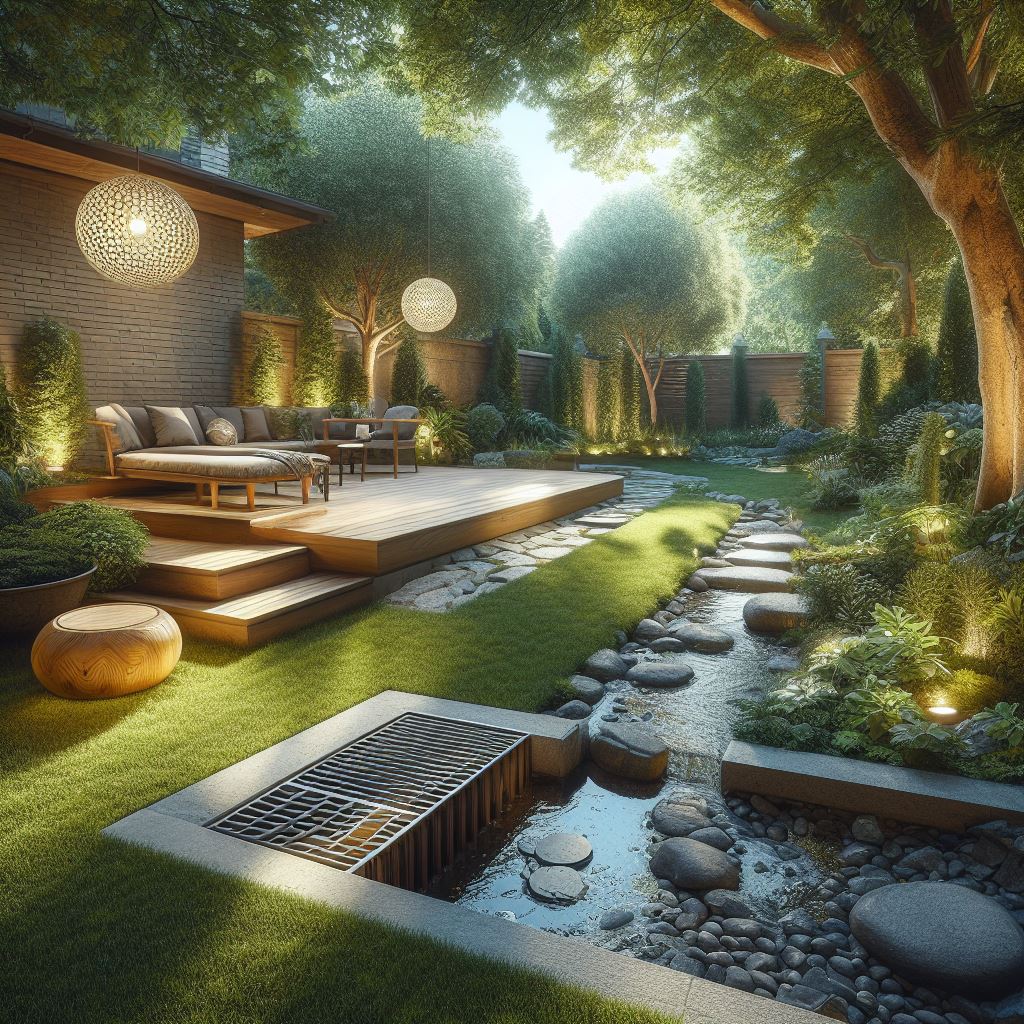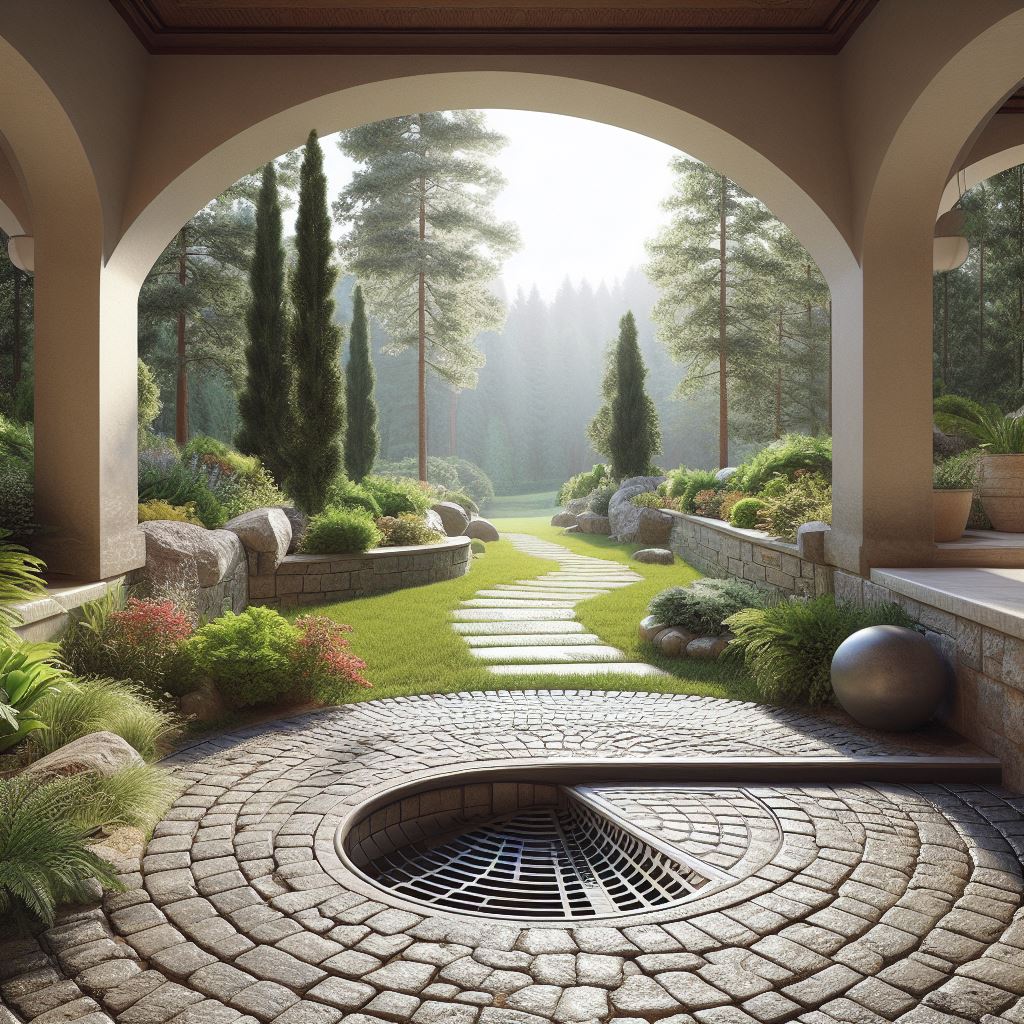A clogged backyard drain may rapidly convert a lovely outdoor spot into a puddle. Understanding the reasons, treatments, and preventative measures for a clogged rain gutter, a pool deck drain that won’t allow water to leave, or a blocked French drain is critical. In this detailed post, we’ll look at the most frequent causes of clogged drains, as well as practical unclogging solutions and prevention recommendations.

Unraveling the Causes of Clogged Backyard Drain
Debris Accumulation: When Nature Takes Its Toll
One common and often unavoidable culprit behind backyard drain clogs is the relentless accumulation of organic matter. Fallen leaves, twigs, dirt, and various outdoor debris naturally find their way into your drainage system. Over time, these seemingly innocuous elements can create substantial blockages that hinder water flow and necessitate timely intervention.
Tree Root Intrusion: The Subterranean Invaders
Tree roots are tenacious in their quest for moisture, even if it means infiltrating your drainage system. Their relentless pursuit can lead to significant blockages that are challenging to clear. Understanding the extent of root intrusion and adopting the right preventative measures is crucial.
Excessive Rainfall and Sediment: Weathering the Storm
During periods of heavy rainfall, sediment, silt, and soil particles can be washed into your drainage system. This sediment buildup can gradually accumulate and result in stubborn clogs that compromise the system’s efficiency. We’ll explore the best practices for managing these weather-related challenges.
Improper Installation: The Foundation of Drainage Woes
The effectiveness of your drainage system hinges on proper installation. A poorly designed or improperly installed system is more susceptible to clogs. We’ll delve into the critical elements of correct installation, such as slope, pipe size, and efficient water flow.
Aging Infrastructure: The Wear and Tear of Time
The passage of time can take its toll on your drainage system. Pipes may deteriorate, with some collapsing or developing cracks. This aging infrastructure can lead to significant clogs and necessitate repair or replacement. Recognizing the signs of aging and addressing them promptly is essential.

Effective Solutions for Clearing Clogs
Manual Cleaning: Taking Matters Into Your Hands
For minor clogs caused by debris, manual cleaning is a straightforward DIY solution. Removing leaves, twigs, and visible debris from the drain can significantly improve water flow. Equipping yourself with the right tools and techniques is essential for success.
Chemical Drain Cleaners: A Solution With Caution
Chemical drain cleaners can effectively dissolve minor clogs caused by organic materials. However, they should be used with care, following the manufacturer’s instructions to ensure safety and prevent damage to your drainage system.
Hydro-Jetting: The Power of High-Pressure Water
Hydro-jetting is a potent method to eliminate clogs resulting from tree roots, sediment, and other persistent buildup. This technique utilizes high-pressure water to dislodge and clear obstructions. Given its power, hydro-jetting is best left to professionals.
Auger or Snake: Navigating the Pipes
Drain snakes or augers are specialized tools designed to navigate through pipes, break up clogs, and retrieve debris. They are invaluable for more challenging clogs that require in-depth cleaning and obstruction removal.
Professional Plumbing Services: Expert Intervention
For persistent or severe clogs, it’s advisable to enlist the expertise of a professional plumber. Professionals can assess the issue’s severity and employ advanced tools and techniques to clear the blockage, ensuring a thorough and lasting solution.

Preventing Future Backyard Drain Clogs
Routine Maintenance: The Key to Clog Prevention
Preventing clogs begins with regular maintenance. A commitment to routinely clean your gutters, drains, and other drainage components can significantly reduce the accumulation of debris and potential blockages.
Root Barriers: Keeping Roots at Bay
If trees are near your drainage system, consider installing root barriers. These barriers create a protective zone, preventing invasive tree roots from entering your drainage pipes and thwarting potential blockages.
Proper Installation: The Foundation of Efficient Drainage
Proper installation is crucial to maintain efficient water flow and prevent future clogs. Addressing factors such as slope and pipe size during installation ensures your drainage system functions optimally.
Effective Rainwater Management: Guiding the Flow
Proper rainwater management is essential to avoid clogs caused by excessive rainfall and sediment. Grading your yard away from structures, installing dry wells, and redirecting downspouts away from drainage systems are some key strategies.
Select the Right Plants: Landscaping Wisely
When landscaping your backyard, choose plants with less aggressive root systems, especially if they are situated near your drainage system. Thoughtful plant selection can help prevent roots from infiltrating your pipes.
Professional Inspections: Scheduled Assurance
Schedule periodic inspections with a professional to identify and rectify issues before they escalate. A professional’s expertise ensures that your drainage system remains free-flowing and efficient, allowing you to enjoy your backyard to the fullest.

Final Thoughts
Confronting a clogged backyard drain can be difficult, but with a better awareness of the reasons, a variety of practical treatments, and proactive avoidance measures, you can keep your outdoor space dry, useful, and pleasurable. By removing blockages quickly and applying preventive measures, you may save your landscape and avoid any harm. Regular maintenance, professional evaluations, and the proper preventative measures are critical to ensure your drainage system stays free-flowing and efficient, allowing you to fully enjoy your garden.

